Beuys and Neuss
Discoveries in the wetland meadows
Discoveries in the wetland meadows
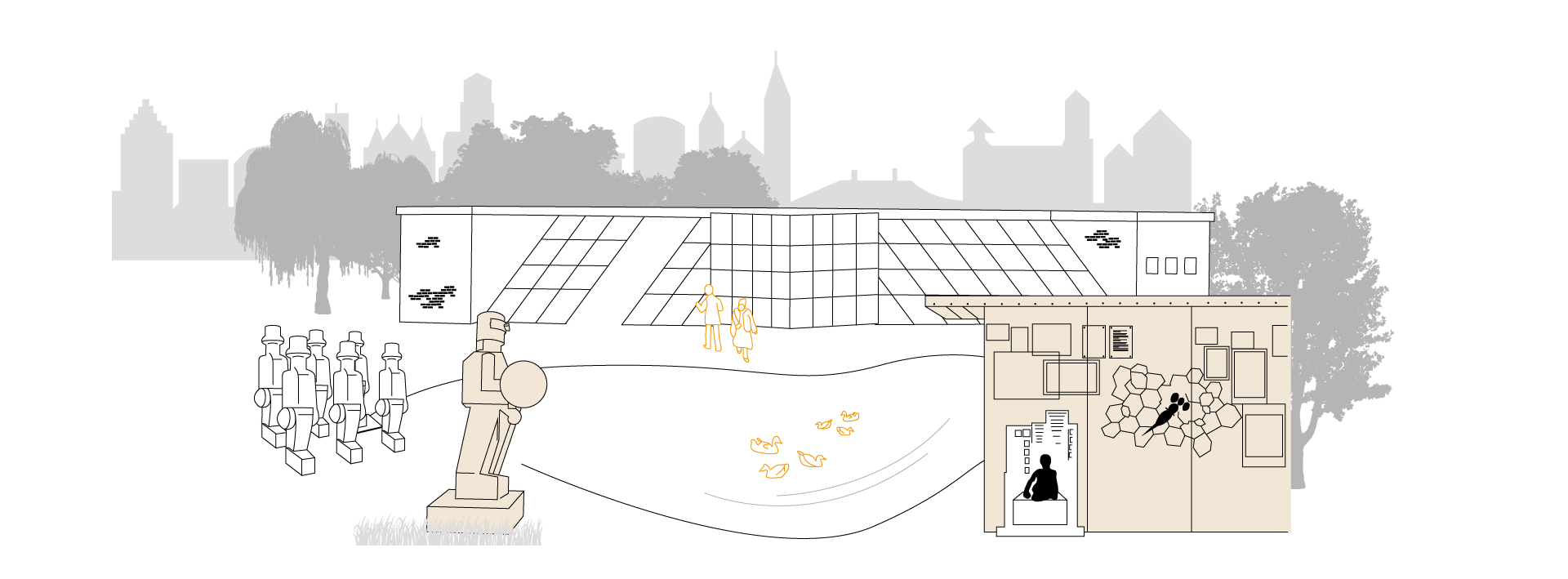
Anatol Herzfeld spent almost every day in his studio on Hombroich island for more than three decades. Many of his works can still be discovered on a round tour today, complementing the art collection literally scattered along the way. Just leave the bike in front of the entrance and start a walk across the Museum Insel Hombroich, which drives home an impressive interaction of art and nature.
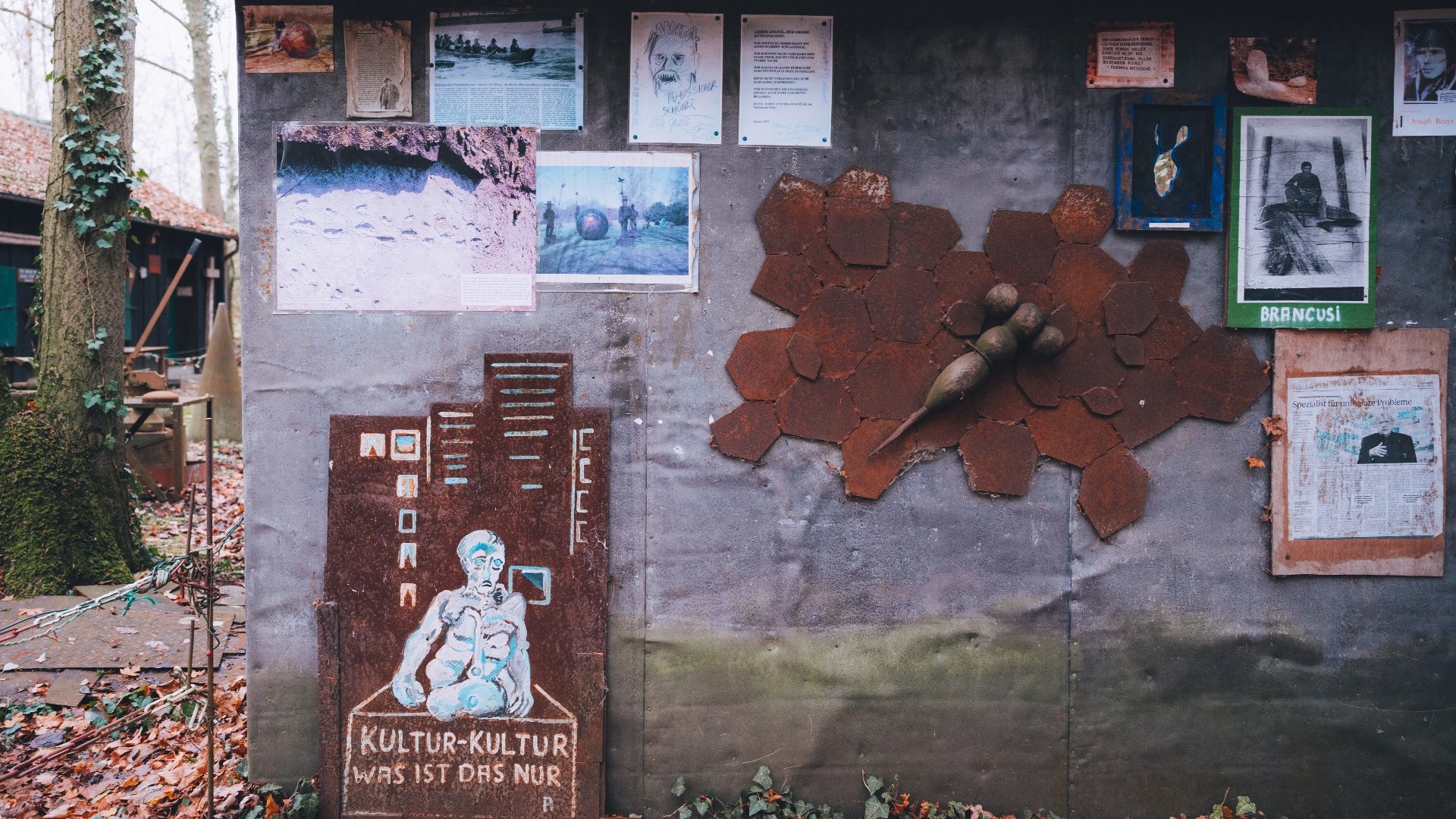
Though neither bridge nor ferry are necessary to reach this island, a kind of Robinson Crusoe feeling spreads while there as everyday life seems to disappear into the distance and visitors easily lose all sense of time while they explore this special art location. Initiator and art collector Karl-Heinz Müller started acquiring the premises on the Erft River in Neuss back in 1982. Artist Anatol Herzfeld, master student and long-time companion of Joseph Beuys, was involved in its design from the outset. Various pieces of art and his former studio can be discovered on a tour through the wild wetland meadows with their enchanted air.
For more than 30 years, Anatol Herzfeld, who died in 2019, spent almost every day at the Museum Insel Hombroich. He created many works in his studio, a former barn, and on the property around it with its many oak and birch trees. His stone, wood, and steel sculptures can be found all over the premises, and some of his paintings are displayed in an exhibition room.
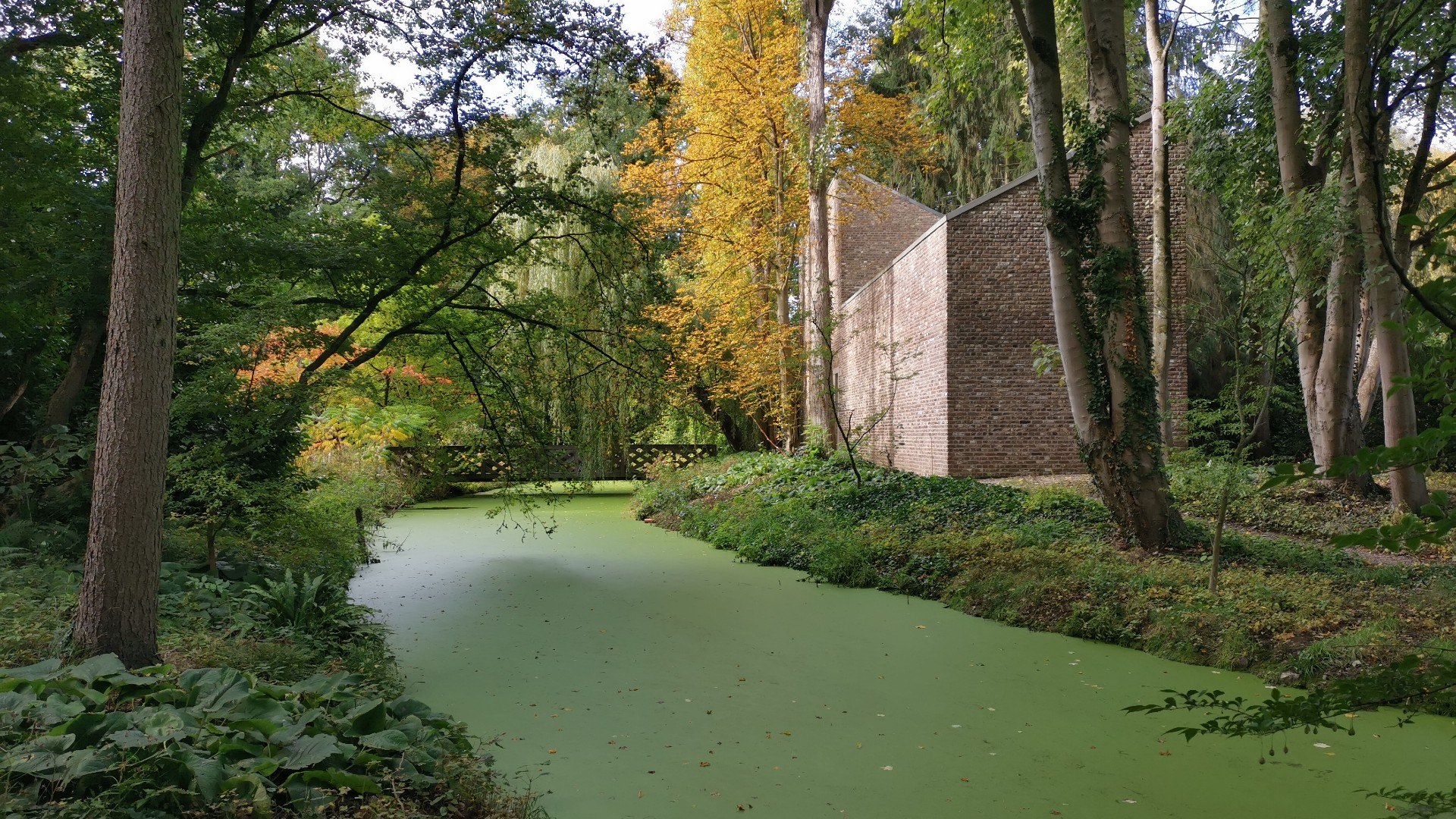
Anyone who comes to explore the island should bring plenty of time for it. The extensive premises on the Erft with their wetland meadows, streams, and art pavilions offer many great places to admire. As many as ten pavilions designed by sculptor Erwin Heerich are embedded into nature as walk-in sculptures here, serving as true eye-catchers. Inside, European art of classical modernism enters into a dialogue with ritual objects from Asia, Africa, and South America.
Visitors also need to go to the effort of discovering the various art sites and nature oases on their own. The island has neither signposts nor notice boards for them. There are no inscriptions or explanations of the pieces of art to ensure an entirely unbiased and direct encounter for the visitors.
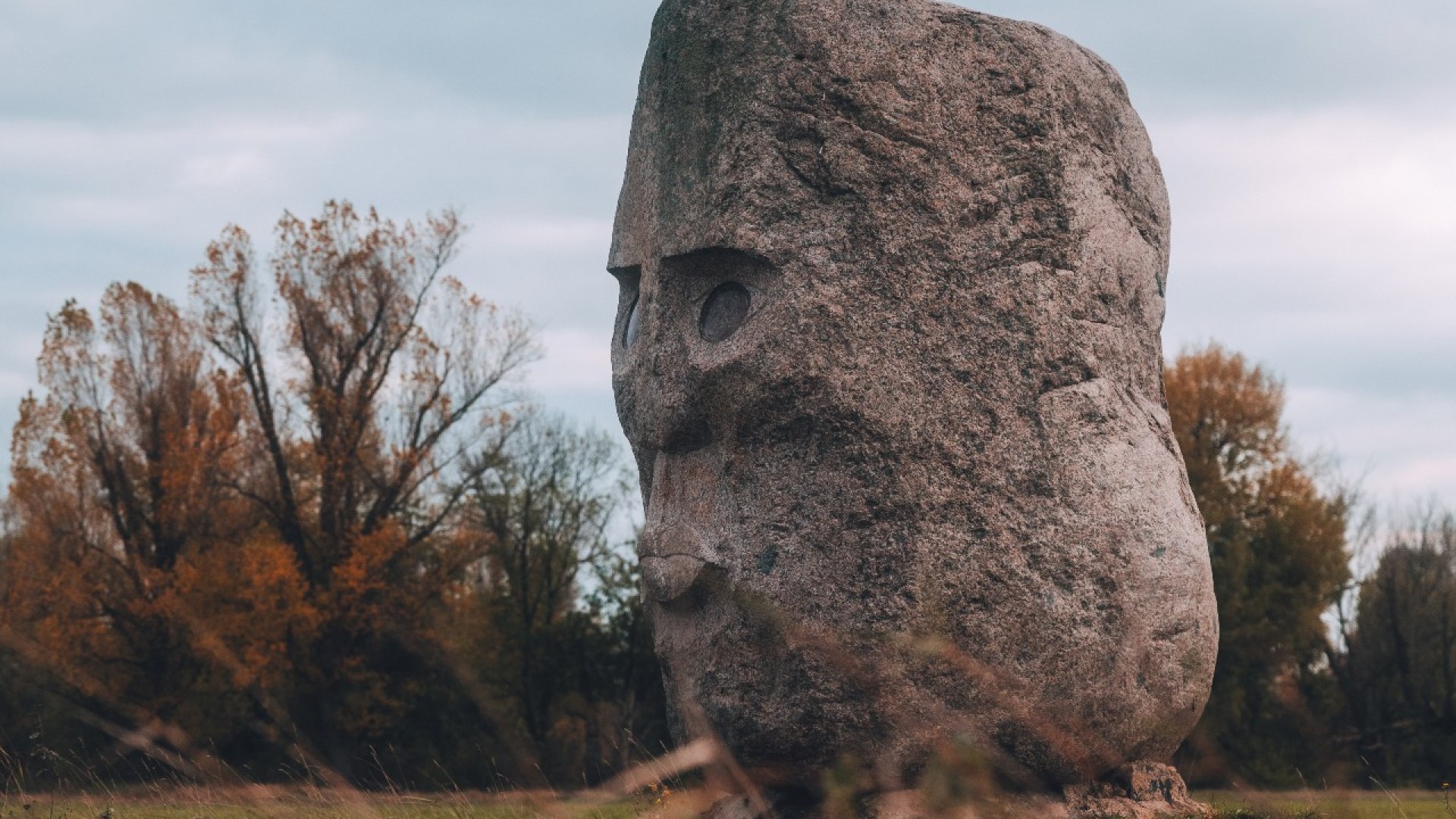
One such encounter with art changed the life of Anatol Herzfeld. After meeting Joseph Beuys, the policeman and puppeteer chose to study sculpture under Beuys at the Düsseldorf Art Academy. One of his first works, which introduced the later documenta participant to a wider public, was a self-made dugout canoe. For the “Homecoming of Joseph Beuys” campaign, marking the climax of the student protest against the dismissal of their academy professor Beuys in 1973, he rowed the dismissed teacher across the Rhine to drop him off on the banks in front of the Art Academy.
Politics and dealing with social issues were relevant to Anatol Herzfeld for as long as he lived, as it is also reflected in his sculptures on the Museum Insel Hombroich. One of them, called “Parliament”, is made up of 27 steel chairs with a rather throne-like look to them, set up in a circle. Works by Herzfeld can be found in other locations in the Rhine district of Neuss as well, including his sculpture stones with archaic-looking faces along the Erft cycling track between the Museum Insel Hombroich and the point where the Erft merges with the Rhine. The large granite head on the banks of the Rhine near Meerbusch, depicting Joseph Beuys, surely is one of his best-known works in public space, however.
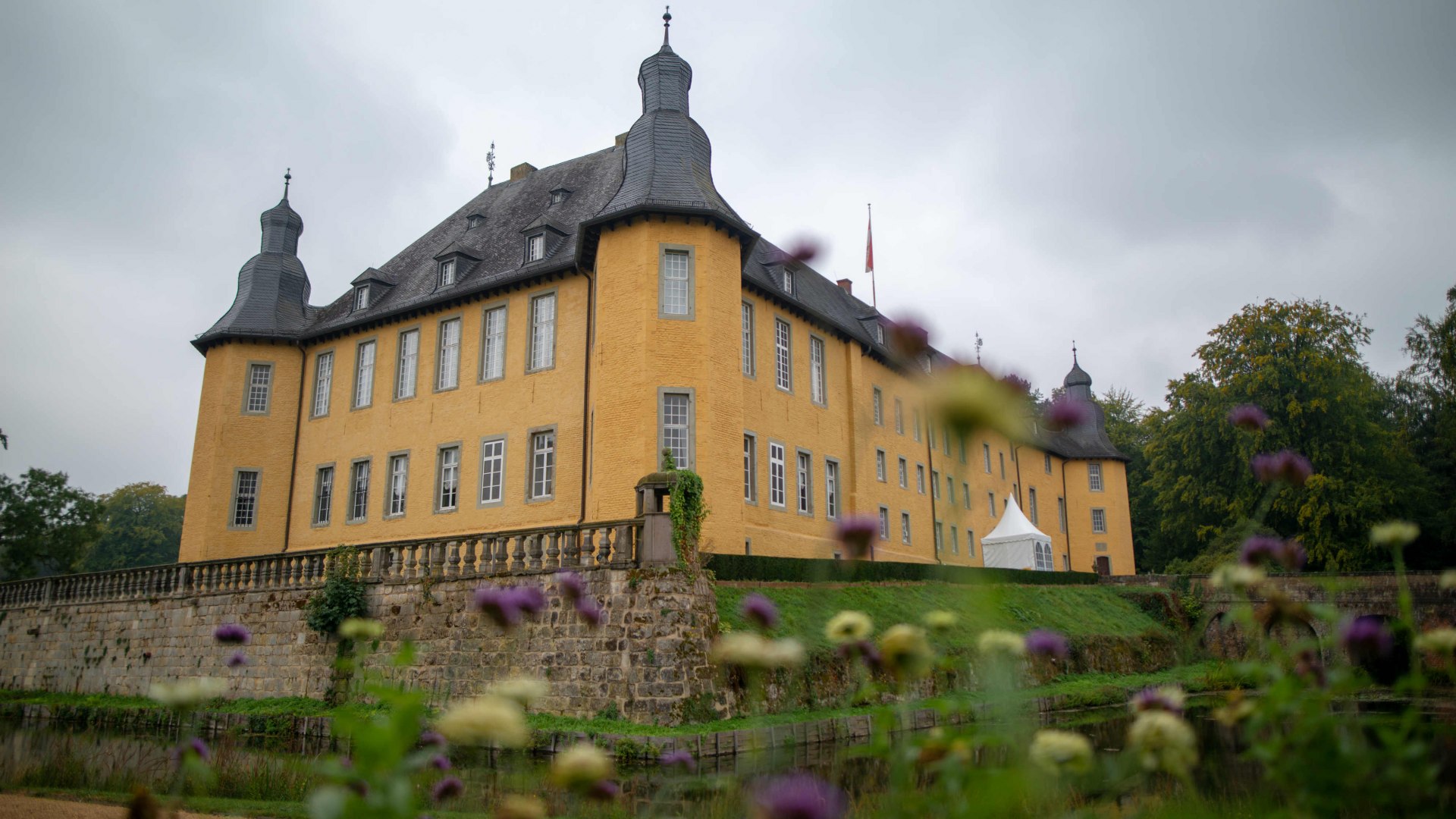
The entire cultural space of Hombroich is accessible by bicycle from the Museum Insel Hombroich. This includes the Langen Foundation, the Raketenstation Hombroich, the sculpture hall of the Thomas Schütte Stiftung, and the Feld-Haus museum for popular prints.
However, a tour of discovery in and around Neuss will lead visitors past other fascinating stations as well. Towards Leverkusen, for example, the route takes them to Benrath Palace, a pleasure palace on the banks of the Rhine with a park, ponds, and canals, and housing the Museum of European Garden Art.
Further upstream, the route passes through the Urdenbacher Kämpe nature reserve, a typical representative of the traditional Lower Rhine cultural landscape with its pollarded willows, fruit trees, and valuable wet meadows. In the direction of Mönchengladbach, a detour to Dyck Castle, a centre for garden art and landscape culture, is a good choice. The moated castle with its English landscape garden, Asian-Japanese inspired show garden as well as farm shop, restaurant, and hotel presents numerous reasons to stop for a nice, extended break.
Discover special Beuys places by bike
Read more